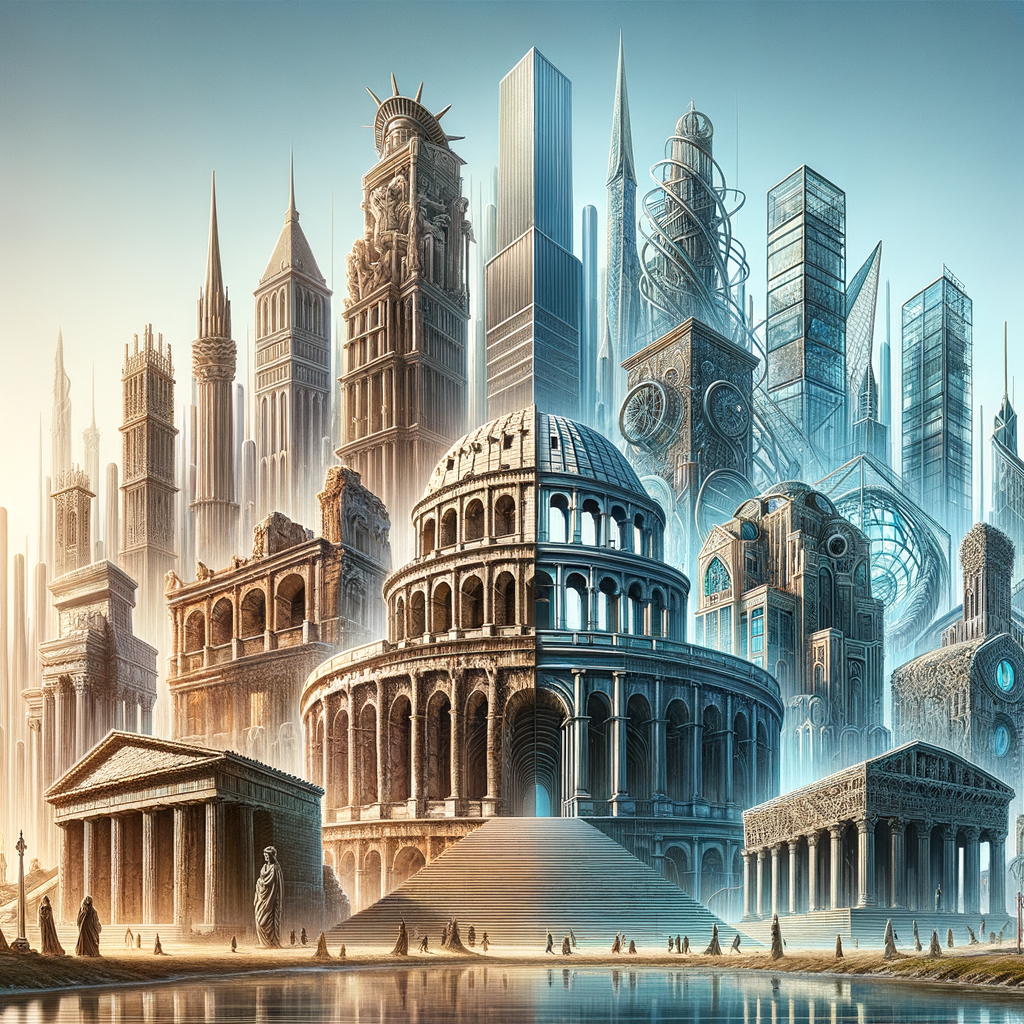Physical Address
304 North Cardinal St.
Dorchester Center, MA 02124
Physical Address
304 North Cardinal St.
Dorchester Center, MA 02124

The architectural landscape has undergone tremendous transformations over the centuries, evolving to mirror societal changes, technological advancements, and artistic movements. This article explores the intriguing evolution of modern architecture, tracing its roots and highlighting its most significant periods and styles.
Modern architecture emerged in the late 19th century as a response to traditional architectural designs that were heavily ornamented and intricate. Influenced by the industrial revolution’s technological advancements, architects began experimenting with new materials like steel, glass, and concrete. These materials allowed for unprecedented structural possibilities such as skyscrapers.
The early 20th century saw the rise of the International Style. Characterised by an emphasis on volume over mass, asymmetrical compositions, and avoidance of ornamentation, this style represented a significant departure from traditional architecture. Architects like Le Corbusier and Mies van der Rohe were instrumental in popularising this minimalist aesthetic.
In tandem with the International Style was the Bauhaus movement in Germany. Established by Walter Gropius in 1919, Bauhaus sought to merge art with industry. The movement emphasised functional design without sacrificing aesthetic appeal. Its influence can be seen in many contemporary buildings that prioritise functionality while maintaining a sleek modern look.
By mid-20th century, architects began questioning modernist principles’ rigidity and impersonality. Postmodern architecture emerged as a reaction against modernism’s strict adherence to functionality at the cost of aesthetics. Pioneers like Robert Venturi championed complexity and contradiction over simplicity and uniformity.
A radical offshoot of postmodernism, deconstructivism, emerged in the late 20th century. Architects like Frank Gehry and Zaha Hadid pushed architectural boundaries with their designs that seemed to defy conventional laws of physics. Deconstructivist buildings often appear fragmented and chaotic, challenging traditional notions of what a building should look like.
The turn of the 21st century has seen an increasing emphasis on sustainable design in architecture. Green architecture aims to minimise environmental impact through energy efficiency, use of sustainable materials, and integration with the surrounding environment. Notable architects such as Renzo Piano and Norman Foster have led this movement towards eco-friendly design.
With the advent of computer-aided design (CAD) technologies, digital architecture has become a new frontier in the field. Digital tools allow architects to create complex geometries and structures that were previously impossible to construct. This technology-driven approach is transforming the way we conceive and construct our built environment.
The evolution of modern architecture offers a fascinating insight into how societal changes, technological advancements, and artistic movements have shaped our built environment over time. From the minimalist International Style to the complexity of deconstructivism, from green architecture’s sustainability focus to digital architecture’s technological innovations – each phase represents a unique response to its contemporary context.
As we move further into the 21st century, it is exciting to imagine what new architectural styles will emerge in response to future societal changes and technological advancements.